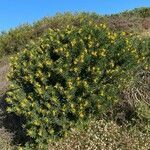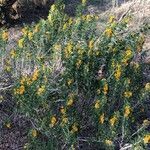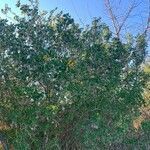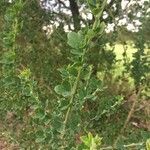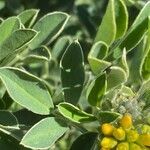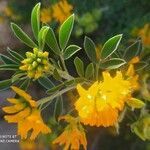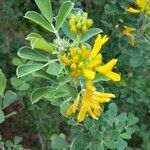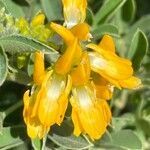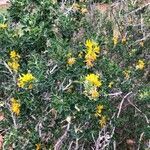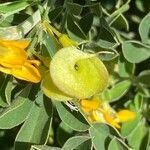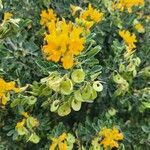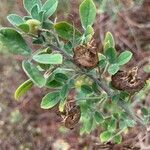Shrubs, 1-2(-4) m, pale yellow sericeous; bark split longitudinally. Stems erect, terete. Stipules narrowly triangular, 5-8 mm, acute, entire; petioles 2-4 cm; leaflets obovate to obcordate, 10-18 × 8-14 mm, sericeous abaxially, glabrous adaxially, lateral veins 5-7 pairs, base broadly cuneate, margin entire, apex obtuse or retuse. Flowers 6-10 scattered in racemes, 2-2.5 cm; peduncles axillary, 3-5 cm, densely silky; bracts ca. 2 mm; pedicels ca. 5 mm. Corolla orange, 12-15 mm. Ovary stipitate; ovules 12-15. Legume loosely coiled in 0.5-1.5 spirals, 12-15 mm in diam., center hollow, appressed pubescent, veins radially reticulate, netted in external circle. Seed reniform, ca. 4 mm. Fl. May.
An evergreen shrub. It grows 2-4 m high. The young stems are white and silky. The leaves have 3 leaflets. They are downy and greyish-green. The leaflets are oval and widest above the middle and narrow at the base. The flowers are pea-like and yellow. They are in round heads or 4-8 flowers. The fruit are spirally twisted seed pods. They are like snail shells. They are 12-15 mm long with a hole in the centre.
